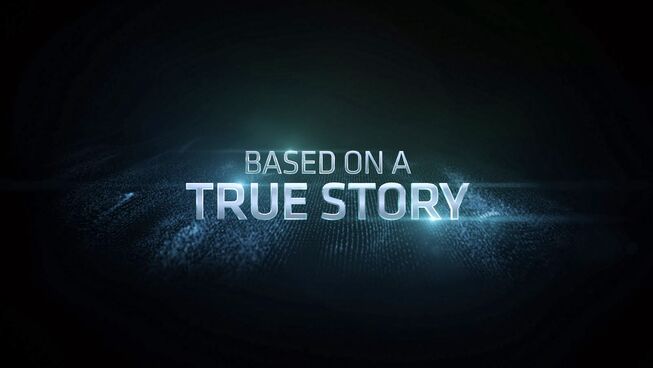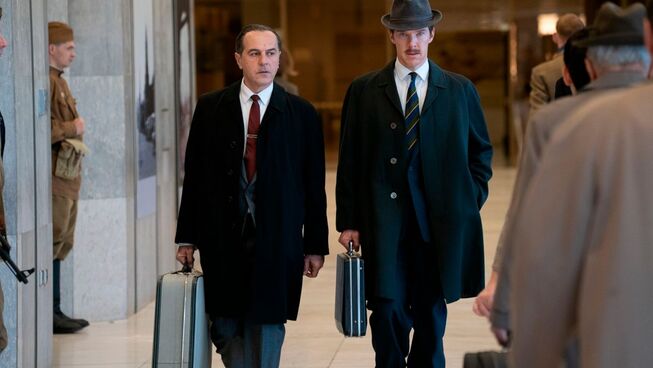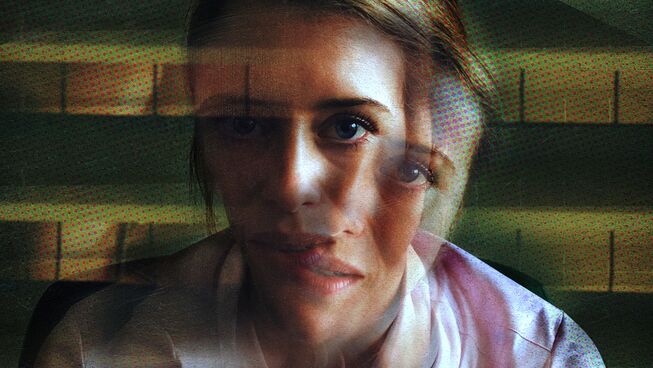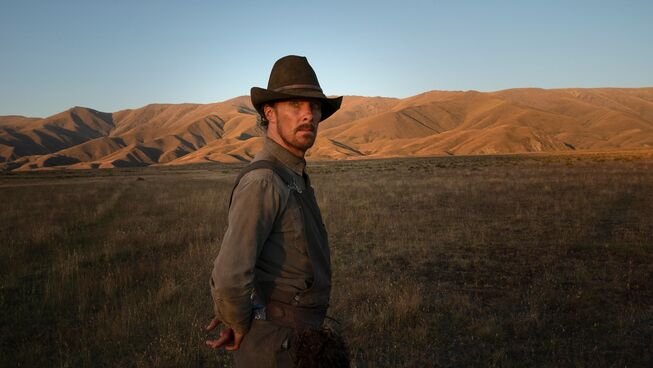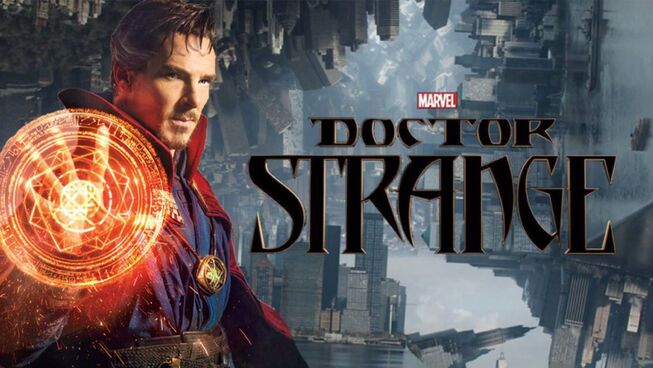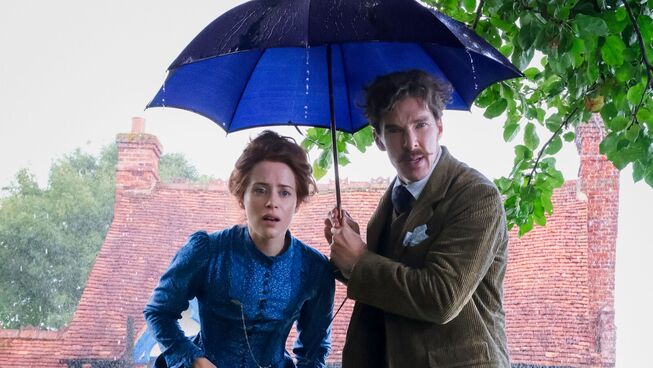
2.5 out of 5 stars
Cats. These animals are the joy of many people’s lives. At the same time, they are an anathema to dog lovers and those with extreme allergies. In the early part of the 1900s, they were not considered pets as much as they served to manage the rodent population in homes around England. Until Louis Wain (Benedict Cumberbatch) began to provide a fun and whimsical depiction of these furry creatures in Illustrated London News, which led to them becoming beloved by many around the world.
After his father’s death around the turn of the century, Louis Wain was left to provide for his five sisters and mother. Despite having varied interests in boxing, music, and electricity, the talented artist developed a reputation as an accomplished illustrator and eventually was hired by the London publication owner and editor Sir William Ingram (Toby Jones). This helped to provide for his family and allowed his older sister to hire a governess named Emily Richardson (Claire Foy) to educate the younger siblings. As she won over the Wain sisters, Louis became enamoured with this boisterous educator and this burgeoned into an eventual romance.
Emily and Louis eventually marry and their love for each other eventually spills over into a passion for a kitten named Peter. This unique relationship with their new feline friend eventually grows into a passion for painting this creature. Even with tragic events within their marriage, Wain kept drawing more images of these animals for publications, books, and wealthy patrons. Images that would move him into legendary status within the cat community and English high society.
If Louis Wain was as idiosyncratic as he is portrayed by Benedict Cumberbatch, he would have been a formidable force to manage in real life. With all of his quirky, frenetic mannerisms, it was amazing that the artist could secure work, much less a wife. This performance proves how this chameleon-like actor can play almost any role with convincing form. Yet, within this film, Cumberbatch is not the only actor worth celebrating. The true bright spark within this artistic love affair was Claire Foy who brought a wonderfully calming balance to the Sherlock actor's frantic style. Whenever they are on screen together, this film is magical and captivating.
Unfortunately, once Foy exits this project, everything goes from bad to bizarre with her early absence. Both in Wain’s personal life and in this screenplay, everything winsome and enjoyable turns into a depressing mess. As with many artists' stories, Louis Wain struggled with mental health issues throughout his life, especially in his final days. This element is difficult to share without becoming uncomfortable and strange to view for the average viewer. Director Will Sharpe mixes the artistry of Wain’s world with beauty throughout the opening acts. Still, the peculiar visuals that come in the final stages make this film unappealing and inaccessible.
Admittedly, art is all in the beholder's eye, and many artists lives can be defined as tragic, which is one aspect of Louis Wain’s history. Yet, it is disappointing how this film went from fascinating entertainment to freakish visual arts that will only appeal to the most artistically inclined, but only maybe.
REEL DIALOGUE: Do you need to be an artist to appreciate The Electrical Life of Louis Wain?
No, but it might make you appreciate your very existence.
To appreciate the artistry of Will Sharpe’s film, one will need to tap into their inner artist. It is no different than attending an art museum, walking through a sculpture garden, or even going through the local botanical gardens. Art comes in various forms, and the appreciation manifests itself in different ways, too. It is why some love contemporary art, and others only can appreciate the classics.
The more profound question is, why do humans create art? It is a complex idea to consider, but the simple but profound answer is that a creative God forms us. The true master artist inspires the best of art. The human form and the rest of nature arouse the artist in all of us because it is part of our very DNA. The created are creative because we are the artistry of the master creator.
'But now, O Lord, you are our Father; we are the clay, and you are our potter; we are all the work of your hand.' - Isaiah 64:8

